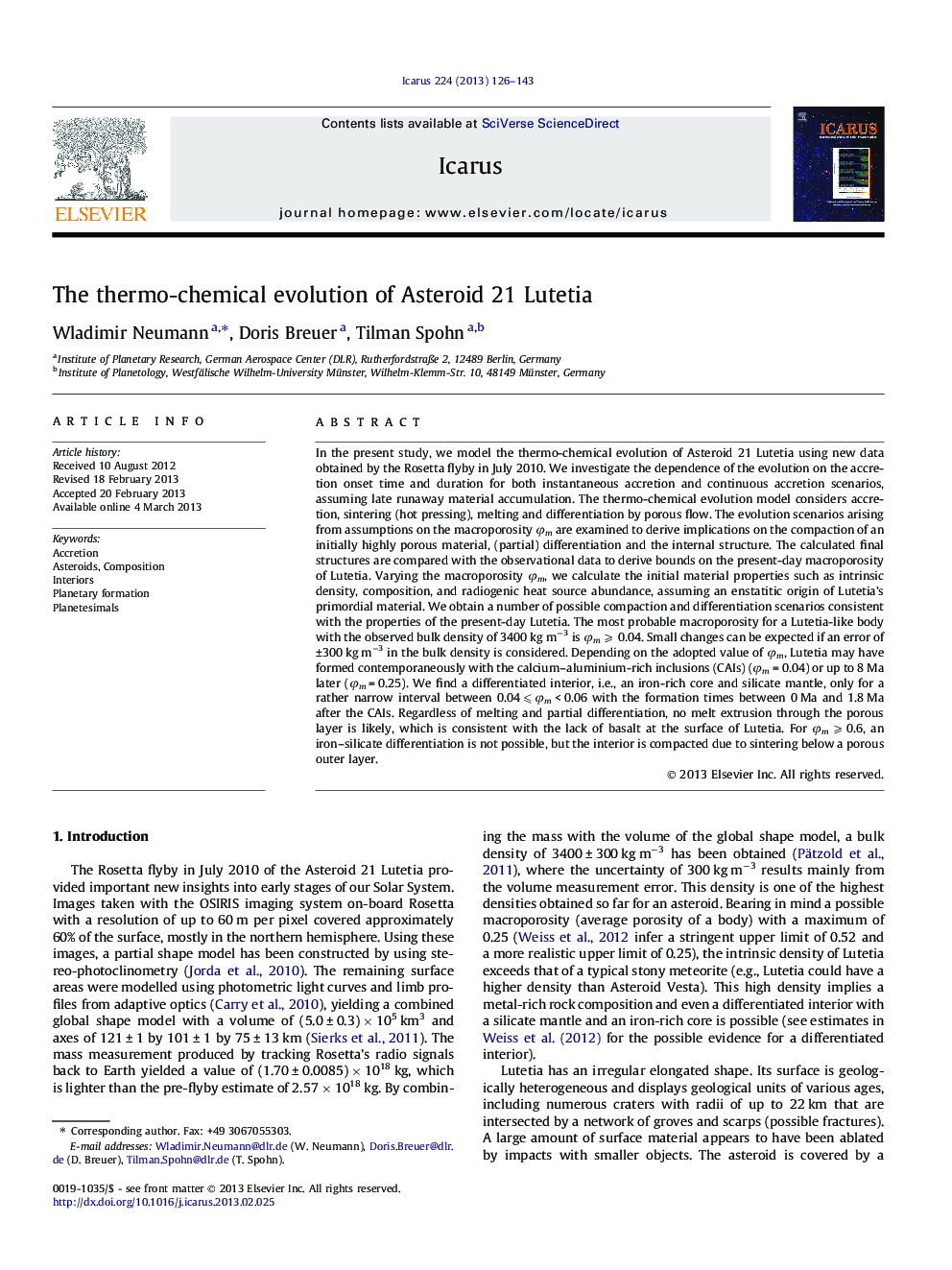| کد مقاله | کد نشریه | سال انتشار | مقاله انگلیسی | نسخه تمام متن |
|---|---|---|---|---|
| 1773535 | 1021137 | 2013 | 18 صفحه PDF | دانلود رایگان |

In the present study, we model the thermo-chemical evolution of Asteroid 21 Lutetia using new data obtained by the Rosetta flyby in July 2010. We investigate the dependence of the evolution on the accretion onset time and duration for both instantaneous accretion and continuous accretion scenarios, assuming late runaway material accumulation. The thermo-chemical evolution model considers accretion, sintering (hot pressing), melting and differentiation by porous flow. The evolution scenarios arising from assumptions on the macroporosity φm are examined to derive implications on the compaction of an initially highly porous material, (partial) differentiation and the internal structure. The calculated final structures are compared with the observational data to derive bounds on the present-day macroporosity of Lutetia. Varying the macroporosity φm, we calculate the initial material properties such as intrinsic density, composition, and radiogenic heat source abundance, assuming an enstatitic origin of Lutetia’s primordial material. We obtain a number of possible compaction and differentiation scenarios consistent with the properties of the present-day Lutetia. The most probable macroporosity for a Lutetia-like body with the observed bulk density of 3400 kg m−3 is φm ⩾ 0.04. Small changes can be expected if an error of ±300 kg m−3 in the bulk density is considered. Depending on the adopted value of φm, Lutetia may have formed contemporaneously with the calcium–aluminium-rich inclusions (CAIs) (φm = 0.04) or up to 8 Ma later (φm = 0.25). We find a differentiated interior, i.e., an iron-rich core and silicate mantle, only for a rather narrow interval between 0.04 ⩽ φm < 0.06 with the formation times between 0 Ma and 1.8 Ma after the CAIs. Regardless of melting and partial differentiation, no melt extrusion through the porous layer is likely, which is consistent with the lack of basalt at the surface of Lutetia. For φm ⩾ 0.6, an iron–silicate differentiation is not possible, but the interior is compacted due to sintering below a porous outer layer.
► We model the thermo-chemical evolution of a 21 Lutetia-like body.
► Our model accounts for different values of the intrinsic density/macroporosity of Lutetia.
► Multiple scenarios consistent with properties of present-day Lutetia are obtained.
► Most probable macroporosity values φm ⩾ 0.04 are inferred.
► Differentiated interior is possible only for 0.04 ⩽ φm < 0.06.
Journal: Icarus - Volume 224, Issue 1, May 2013, Pages 126–143